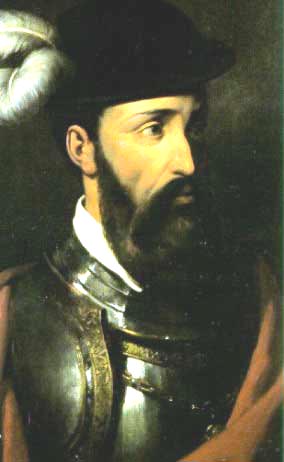pizARRO BIOGRAPHY

Francisco Pizarro was born in Trujillo, Spain, around 1471. His father was a captain in the infantry, but his parents were never married. Raised by his grandparents, Pizarro sailed to the New World in 1509. He initially spent time in Hispaniola and later contributed to the establishment of San Sebastian on the northern coast of South America. Eventually, Pizarro made his way to Panama, where he accompanied Balboa on an expedition that led to the discovery of the Pacific Ocean. When Pedro Arias de Avila became the new governor of Panama, Pizarro aligned himself with him and was duly rewarded.
Pizarro had heard rumors of a great civilization rich in gold located further south. He led his first expedition to explore the western coast of South America in 1524, but it failed due to bad weather and hostility from local natives.
In 1526, Pizarro led a second expedition south. During this journey, one of his ships encountered an Incan raft filled with valuable supplies, including gold, silver, and emeralds. They captured the Incas on board, turning some of them into interpreters. Spurred by this discovery, Pizarro and his men regained their enthusiasm for exploration. However, they faced strong opposition from local tribes and returned to Panama.
Frustrated by the Panamanian governor's reluctance to approve a third expedition, Pizarro sailed to Spain to plead his case directly to King Charles V. In Pizarro's absence, Queen Isabella signed a decree that authorized him to conquer the region holding the Inca Empire.
Pizarro returned to the New World with a small army and proceeded down the western coast of South America. He landed at Cajamarca and moved inland, establishing a settlement at San Miguel de Piura in July 1532. His scouts informed him that the Inca leader, Atahualpa, was resting at a spa after a civil war. Pizarro went to that location and captured Atahualpa when he refused to submit. The Incas offered a large ransom of gold and silver for their king's release. Pizarro agreed, but once the room was filled with gold and silver, he betrayed his promise and executed Atahualpa. Pizarro then conquered Cuzco, the Inca capital, in 1533. Finding Cuzco unsuitable as a Spanish capital due to its high elevation, Pizarro founded Lima. He remained the governor of Peru until his assassination in 1541.
.
 >
>